A variety of mechanical feeders, including drag-chain conveyors and rotary pocket feeders, historically have been used to volumetrically control the flow of fuel to coal pulverizers on power generators. Most power generation in the United States has relied on burning fossil fuels in steam boilers, with coal as the fuel of choice. By the 1920s, pulverized-firing (the burning in suspension of finely ground coal particles) evolved as means to more complete fuel combustion and higher system efficiencies and facilitated the use of larger boilers.
OH
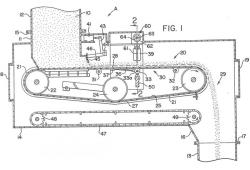
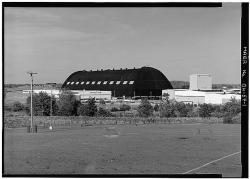
Wind dynamics were a major consideration in building such a huge structure. When winds blow against the building, they are deflected up over the roof, creating a partial vacuum that can draw the roof up with a force several times greater than the direct force of the wind. Wind tunnel testing on a model helped designers decide that a semi-parabolic shape would best resolve air current concerns.
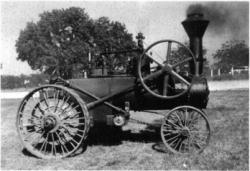
These engines, built by Cooper & Co., of Mount Vernon are among the oldest surviving agricultural steam engines to show the evolution from the portable, skid-mounted engine (ca. 1860) to the horse-drawn engine (1875), through the self-propelled but horse-guided engine (1875) and finally to the self-propelled, self-steered traction engine (1883). Such engines powered the conversion to mechanized farming, which was a great hallmark of the Industrial Revolution.
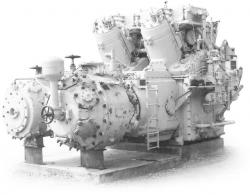
This compressor was a product of the combined technology and design heritage of both the C. & G. Cooper Company of Mount Vernon and the Bessemer Gas Engine Company of Pennsylvania, which had merged in 1929. Ralph L. Boyer, the chief architect of the GMV, worked for Cooper-Bessemer from 1926 through 1965.
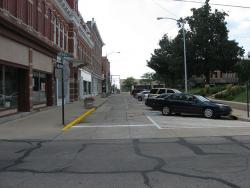
"This is the first Portland cement concrete street built in the United States ... Here started the better roads movement which has given our citizens from coast to coast swift and sure transportation."
- Historic marker, Bellefontaine, Ohio, celebrating the 50th anniversary of America's first concrete pavement, 1941

Constructed on 1,040 acres just 10 miles southwest of the city center, the Cleveland Hopkins Airport was the first major airport in the world to provide an integrated system of paved landing surfaces, lighted runways, and a terminal complex consisting of hangars and operating facilities. Overseen by city manager William Hopkins and Major "Jack" Berry - an engineer on loan from the U.S. postal service who eventually became the city's first Airport Commissioner - the project at first was called "Major Berry's Folly" by local residents because of its outlying location.
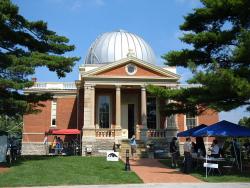
The Cincinnati Observatory, founded by Ormsby MacKnight Mitchel in 1842, is America’s oldest public/professional observatory. The observatory was situated on Mt. Adams, east of the current downtown Cincinnati; the hill was named for former President John Quincy Adams when he laid the observatory’s cornerstone. In 1873 the observatory was relocated to Mt. Lookout when it became a component of the University of Cincinnati (UC). From 1870s until 1930s the stellar proper motion studies reigned as the observatory’s principal activity.
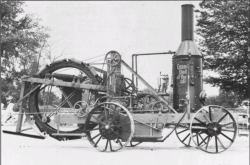
During the post-Civil War era, efforts to cultivate the land for higher crop yields resulted in the digging of thousands of miles of ditches to improve land drainage. Accurately graded ditches were needed for open drainage, pipeline trenches and placement of underground agricultural drainage tile. Teams of skilled workers laid out the direction and gradient of a ditch and dug it out with pick and shovel. The Black Swamp area, where Lake Erie drains into northwest Ohio and southeast Michigan, was the center of much of the U.S. ditching activity.
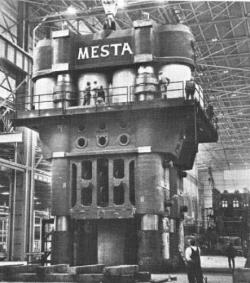
This 50,000-ton die-forging press is among the largest fabrication tools in the world. It was designed and built for the U.S. Air Force by the Mesta Machine Company of Pittsburgh, following the discovery of a 30,000-ton press used by the Germans in World War II (later acquired by the Soviet Union). By 1950, a Heavy Press Program was organized to establish a self-sustaining industrial base for a press capable of producing large forgings and extrusions for the United States. The 50,000-ton Mesta press was one of the first built under this program between 1952 and 1955.
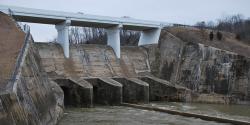
The Miami Conservancy District flood control project was the direct result of the disastrous flood of 1913, when waters from the Miami, Stillwater, and Mad rivers flooded Dayton and surrounding communities in the Miami Valley. More than 400 lives were lost and property damage exceeded $100 million. When Dayton flooded, great fires raged, adding to the devastation. Many believed that the area would never recover.
- Concrete Conduit
- Dry Dam
- Earth-Core
- Flood Control
- Flood Prevention Committee
- Great Depression
- Levee
- Mad River
- Miami Conservancy District
- Miami River
- Retardation Basin
- Stillwater River
- 1920-1929
- 1922
- 1972
- 45424
- ASCE
- Civil
- Flood Prevention Committee
- Great Dayton Flood
- Morgan, Arthur Ernest
- OH
- USA
- Water Supply & Control


